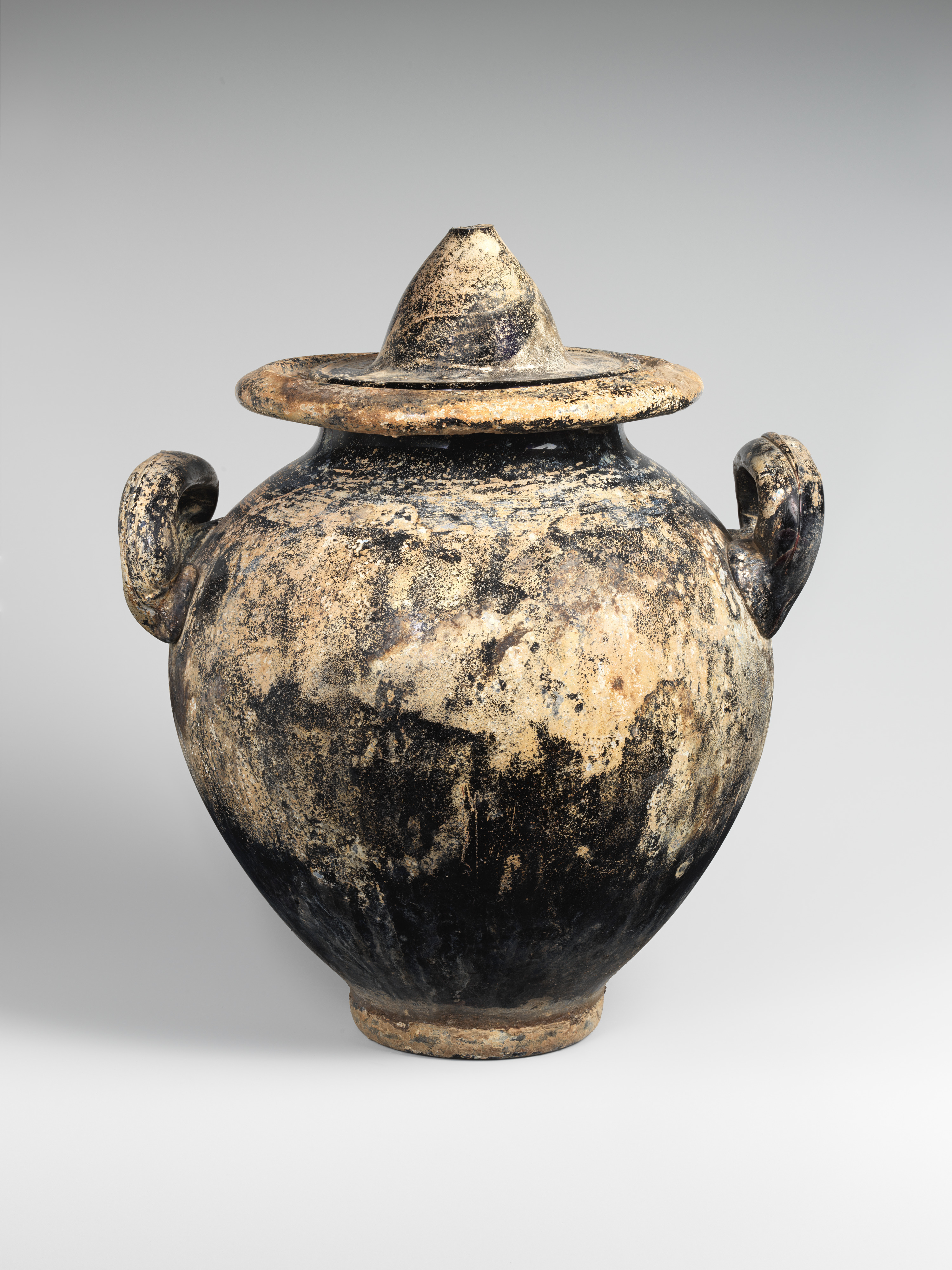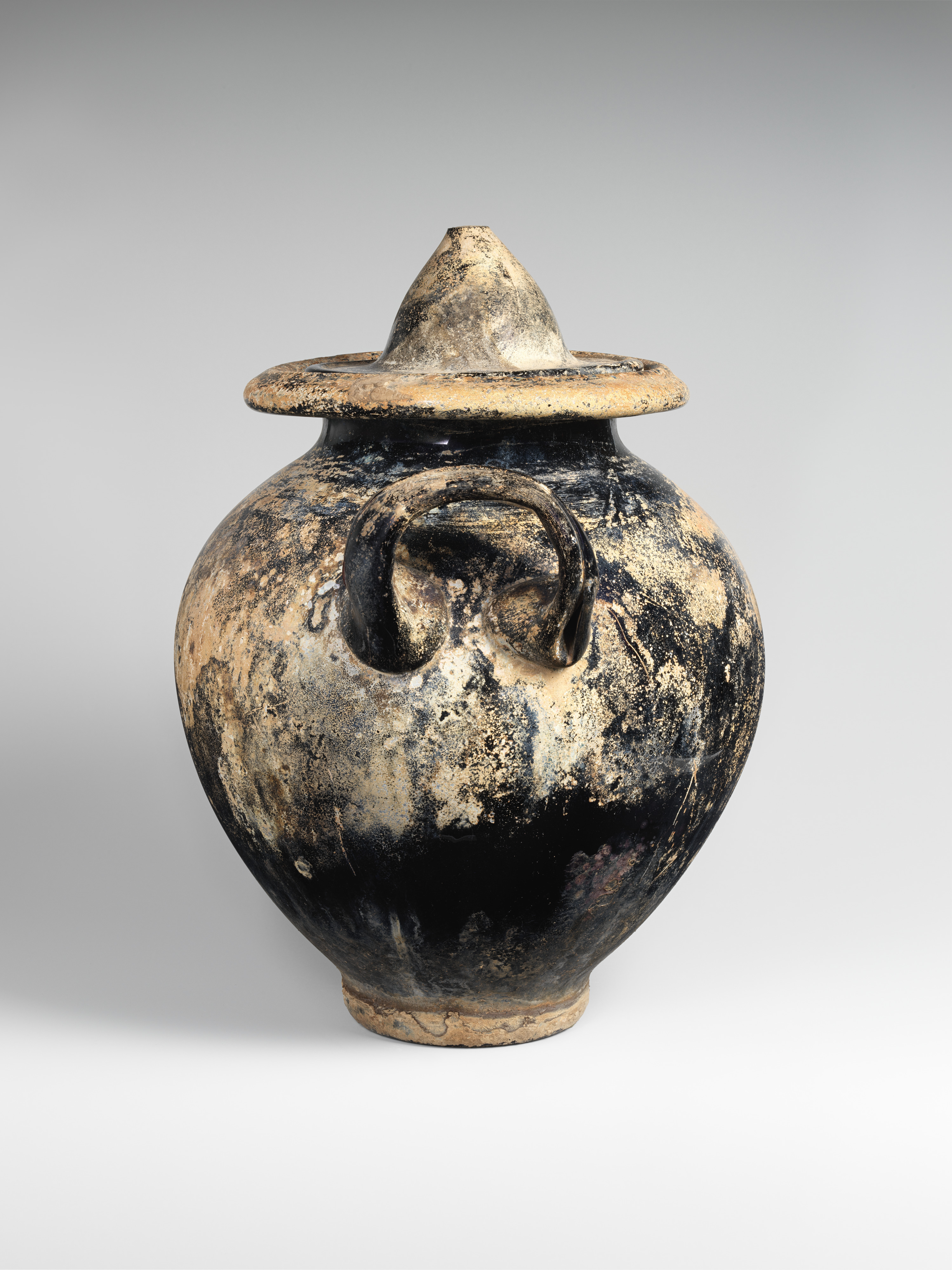Glass cinerary urn with lid
Urn: Translucent deep purple, appearing black; handles in same color.
Collar rim, folded out, down, round, up, and in, with beveled edge; broad, rounded mouth; short neck; piriform body; vertical hollow foot; bottom concave around edge; two vertical, arched, inverted U-shaped handles, attached on opposite sides of upper body, each made of a thick trail, applied as a large circular pad, drawn across body from left to right, and trailed off back along top of handle.
Body and handles complete, but broken around base with most of bottom missing; dulling, pitting of surface bubbles, limy encrustation around base, creamy brown weathering, and iridescence.
Lid: Translucent deep purple, appearing black.
Thick, rounded rim, folded up and in; outer side flat, then shaped like a thick, tall cone, ending in a jagged pontil scar at top.
Complete, but broken and repaired; dulling, pitting of surface bubbles, patches of limy encrustation, creamy brown weathering, and iridescence, but no weathering on interior of cone.
The lid and urn fit snugly together and have the same weathering, suggesting that they belong together.
Most surviving urns are made from naturally colored blue-green glass. The deep translucent purple color of this example is unusual. Similar vessels are known from sites in the Gallic province of Narbonensis (in modern southern France).
Due to rights restrictions, this image cannot be enlarged, viewed at full screen, or downloaded.
This artwork is meant to be viewed from right to left. Scroll left to view more.





